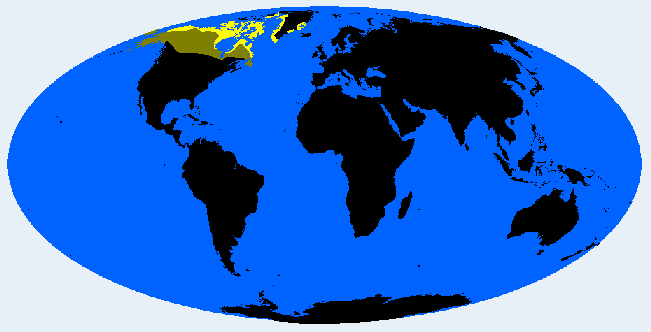Description:
Eskimid proper type, ranging over the vast, sparsely populated tundra along the icy coasts of Alaska, Nunavut, and Labrador (Canada) to Greenland. Mainly found in Inuit people. The northernmost phenotype in the world, including the North Greenlandic Inughuit group. The result of a relatively late migration to America. Shows the most extreme adaptions to Arctic climate in the world. Sometimes in Yupik, Kutchin, Ingalik, Chipewyan, Newfoundlanders, and others.Physical Traits:
Light yellowish/reddish-brown skin. Coarse straight black, sometimes fairer hair. (Rather) short, endomorph, but muscular, (hyper-) macroskelic, short-limbed. Ortho-, sometimes chamaecranic, dolicho- mesocephalic. Nose straight, hyperleptorrhine with the smallest opening in the world. Face large, angular. Cranial capacity very large. Wide, pointed jaw, cheekbones prominent, hairiness modest. Mongolian fold frequent.Literature:
Named and defined by Neumann (1952, 1966). Levin (1963), who regarded it as an Arctic subtype and illustrated differences to the Western Arctic or Bering Sea type. Usually regarded as the Eskimid proper (Eickstedt, 1934; Lundman, 1967; Biasutti, 1967; Knussmann, 1996) or classic Eskimo type (Cole, 1965; Vogel, 1974).





